When selling your home, think of it as marketing a product. Your goal is to make your house look bigger, brighter, cleaner, and more luxurious so that buyers can easily picture themselves living there. First impressions matter. These staging tips will help you get more buyers in the door — helping you sell your home faster and at a higher market value.
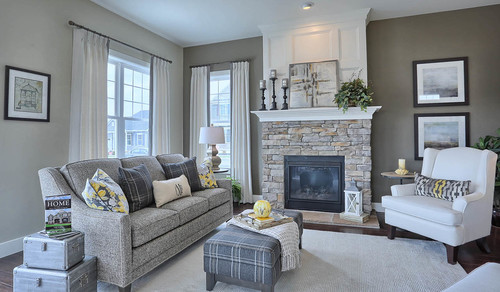
Just remember: You are not the target audience. These guidelines will help your home appeal to a diverse group of homebuyers, so trust the process!
Clear the Clutter.
De-cluttering your home can be tricky… especially while you’re still living there. But it’s the single most important thing you can do to stage your home for a successful sale.
You may look around and think, “I don’t really have any junk.” But in real estate, you want to think like a minimalist, emphasizing the open space, ample storage, convenience, and lifestyle that your home offers. Staging is the art of suggestion because buyers will ultimately have their own ideas for adding both style and function.
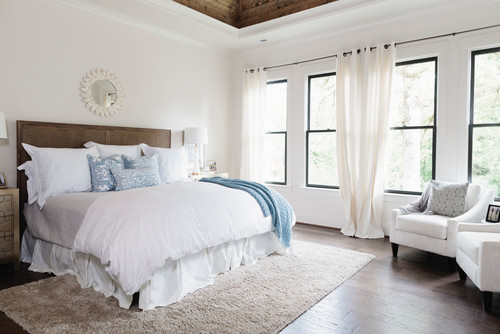
For best results, rent a short-term storage unit. Move every non-essential item out of your home, if possible, leaving the main furniture and select accents. And if your furniture is dark or jumbo-sized, you may consider staging with lighter pieces, to make your space look larger and brighter in pictures.
Style Your Bookcases and Open Shelves.
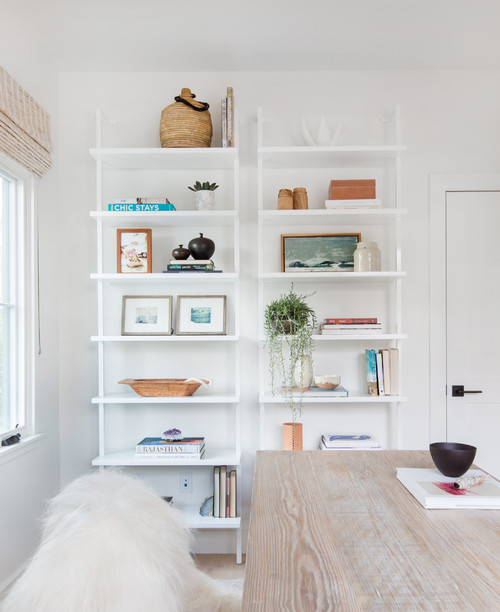

Avoid filling your wall-to-wall shelves completely, which looks cluttered. Leave open space, which implies there is plenty of storage. Less is more!
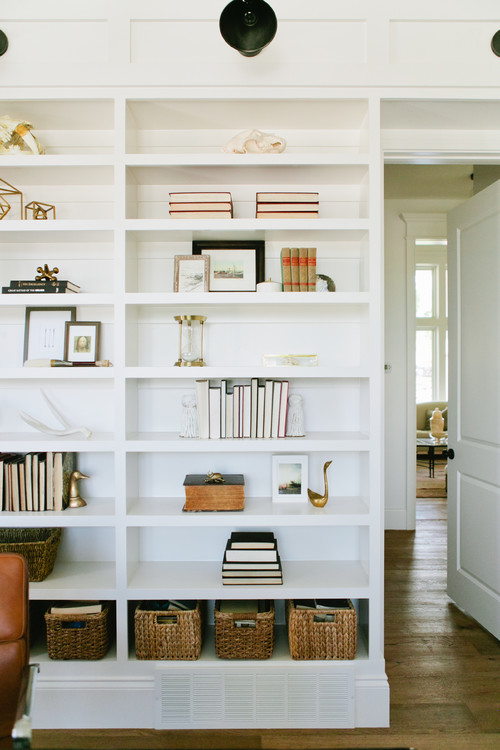
- Books: Pack most of them away. Select just a handful of medium-size, high-quality books to keep on display, preferably hardback. For a more neutral look, make paper book covers, or flip your books around with the spine to the back and the page edges facing out. Add some bookends, and stack several horizontally to complement your decor.
- Baskets: Use baskets to add texture and warmth, and bring visual balance. It’s also a great way to hide the clutter that needs to be accessible.
- Plants: A small amount of greenery makes a boring bookshelf come to life! If you incorporate both real and faux plants, guests may assume they are all real. As long as you get the scale right, it’s hard to go wrong here. A decorative vase with leafy stems works well anywhere.
- Frames: These add variety with artwork or family photos, and can easily sit on a stack of books or lean against the back wall. Layer frames of different sizes and colors next to each other, and experiment with the angles.
- Knick Knacks: Bookshelves are the perfect place to display that souvenir wood carving, set of shiny orbs, metal basket, statue head, lantern, candles, and glass jars. Get creative with what you have, or pick up some inexpensive and neutral pieces from Home Goods or T.J. Maxx. You could choose a light and neutral theme, or use a variety or textures and materials for more contrast.

Take Cues from Designer Kitchens.
Firstly, you need to clean it. From the fridge to the sink to the stove, make it sparkle! Then, it’s time to declutter. The toaster, coffee pot, utensil holder, cutting board, soap dispensers, dish towels, spice rack, and various gadgets look busy on your kitchen counters, especially in photos. Temporarily put away or store any item you can while showing your house, and leave nothing on the countertops except for tasteful decor (keep reading!).

Imagine featuring your home in a magazine spread. Think of a simple centerpiece for your kitchen island or a small plant for the window sill. Select from a few choice items to display, such as fresh flowers, a modern set of jars, a rustic wooden sign or picture frame, and a bowl of fruit or lemons.

A textured, neutral rug adds contrast, warmth, and comfort to a kitchen, without distracting from the countertops, appliances or storage space.

If you have open shelving, you might feature plain white dishes alongside a pair of cookbooks and a succulent. Keep it neutral, as these are accents and not the focal point.

Look to the Decorating “Rule of Three.”
Use the rule of three, a principle of interior design, to decorate in a way that’s visually appealing. This could mean using 3 light sources in every room, 3 decorative pillows on a sofa or bed, 3 coordinating colors or fabrics, 3 pieces of art hung together, 3 interesting objects on your coffee table or nightstand, a stack of 3 books, or a grouping of 3 assorted glass bottles or candles.
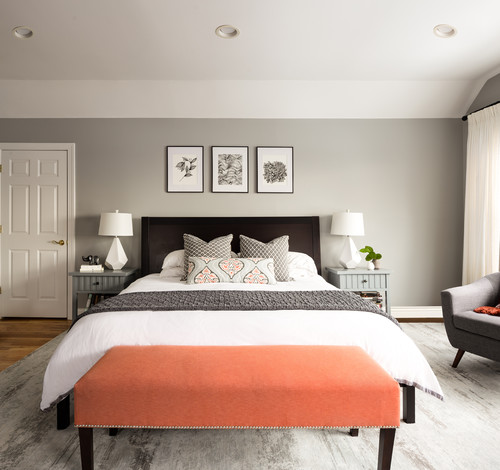
But less is more. If you have a wall that’s covered in a variety of smaller art, you might think about swapping it out for one or two large statement pieces.
Add height, variety and texture to tables.
Large, medium, small. Wood, metal, glass/porcelain, paper, greenery. There are endless combinations of plants and flowers, candles, trays, books, frames, and vases to suit your style.
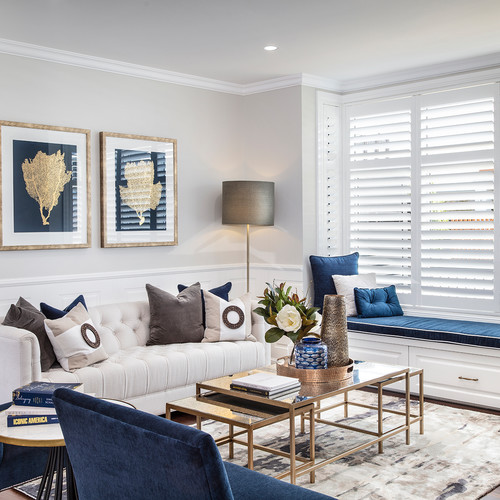
Just keep the scale in mind. A larger table surface demands more height and variety, while a smaller one requires simplicity. Lamps and bowls are perfect for entry tables and side tables, while books and trays provide a great foundation for coffee table decor. And don’t forget to use the floor space beside your furniture, where baskets or crates will come in handy.
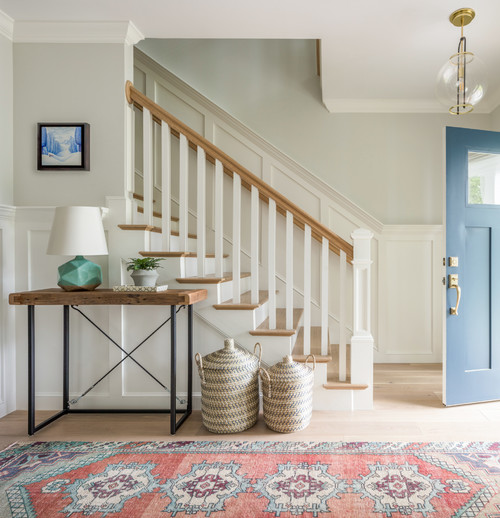
Steal Styles from High-End Hotels.
White bedding is the gold standard in the hospitality industry, and gives bedrooms a clean and fresh feel. Layer bedroom fabrics with a quilt or throw blanket, decorate pillows, and a rug or drapes. And use lamps with one or two other items on adjacent side tables.

Organize Your Storage Spaces.
Your buyers may look through your shelves, cabinets and drawers, so err on the side of minimalism. Store seasonal clothes so that your closets have ample room for spacing between each hanger. Organize your shelves and closets using bins, buckets or baskets to hide the small stuff out of sight.

In your pantry, pack up or throw away any items you won’t use in the next month. Transfer boxed goods into clear jars or uniform plastic containers for an instant design upgrade.

In your linen closet, carefully fold and stack items the way department stores display them on their shelves. Use bins or containers to collect clutter and loose items.
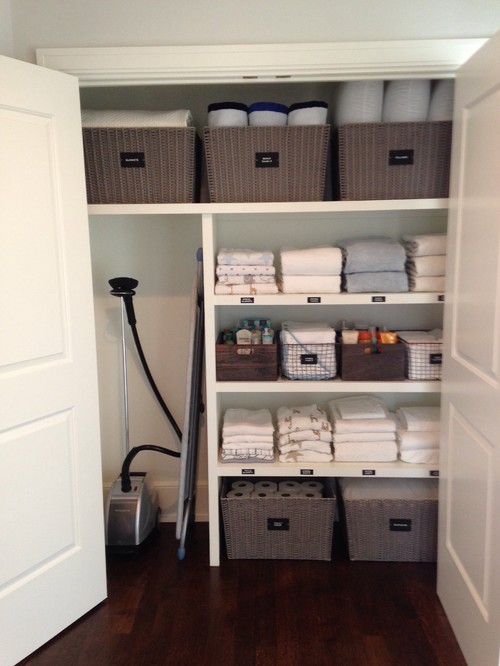
If you have a garage, clear everything you can off the floor, and organize the shelves. If your garage is full of stuff, buyers might think that storage in your house is inadequate. Declutter and leave some walking room between the car(s).
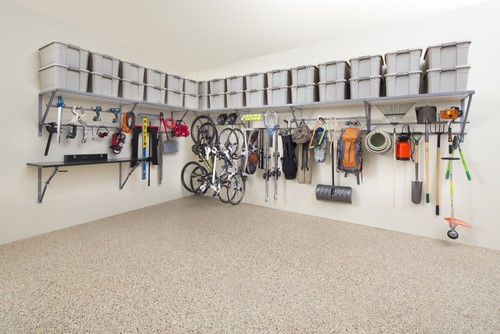
It might seem over the top to arrange a closet by color, sort books by size, or label every storage container. But picky buyers will notice these details, and remember the meticulously maintained home.
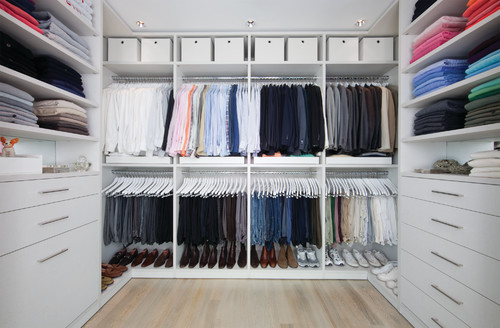
For some inspiration, pour a glass of wine and watch Tidying Up with Marie Kondo on Netflix. If that doesn’t spark joy for you, grab some popcorn and watch Hoarders. Remember, selling your home is a great opportunity to take inventory of the things that really matter most to you.
Add a Comfortable Seating Area.
To make your home feel extra cozy and inviting, add one or two reading chairs away from the main TV room sofa. This could be in a bedroom, a living room or an empty nook.
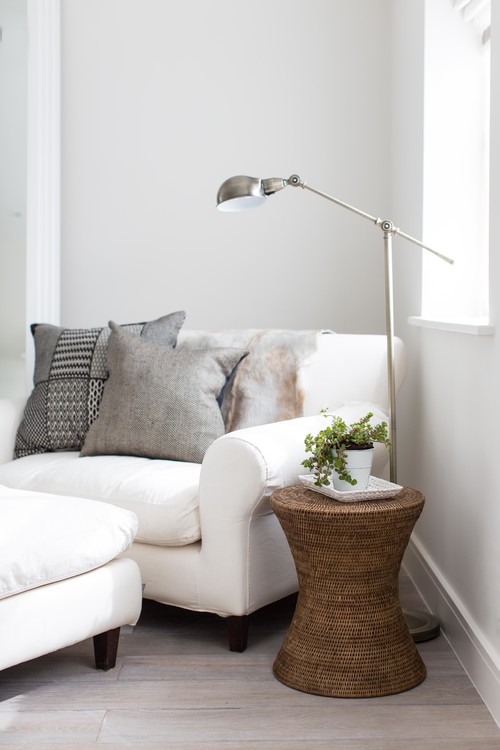
The ingredients never change: A comfortable chair with a pillow or throw blanket, a side table, a table or floor lamp, and a plant or simple decoration.

De-Personalize the House.
This doesn’t mean you need to erase any evidence of your family from your home. But put yourself in someone else’s shoes, and think about neutral styles that will appeal to a majority of people. It’s totally subjective, but here are a few examples that might turn off potential buyers:
- Brightly painted walls or loud decorating schemes
- Taxidermy, antlers, or hunting weapons
- Collections of any kind, such as trophies, teddy bears, or ancient swords
- Artwork with themes of nudity or violence
- Political refrigerator magnets or opinionated signs

Choosing a house is an emotional process, so that last thing you want to do is stir up negative feelings for buyers. But that doesn’t mean your house can’t have any personality, so use your best judgment.
Clean Thoroughly, Inside and Out.
Deep cleaning to sell your home is assumed, but people often overlook critical areas like smudges on windows, grout stains, and dust-covered baseboards, window blinds, air vents, ceiling fans, and globe lights. As you’re looking for carpet stains and spots on the floor, don’t forget to check for grime underneath your refrigerator, stove, and dishwasher. Professional deep cleaning may be in order, particularly if you’ve lived in your house for a while.
Take the time to sweep the cobwebs out of the garage, touch up your exterior paint and trim, power wash your deck, and clean up the landscaping. A spotless house will sparkle in photos and make the best first impression.
Talk to a Professional.
Before you invest time and money in staging your home or completing repairs and upgrades, talk with a real estate agent. Every housing market is different, and a skilled agent can help you get the most bang for your buck. If you’d like to discuss the most valuable home features in your neighborhood in Kitsap County, get in touch with me today!

